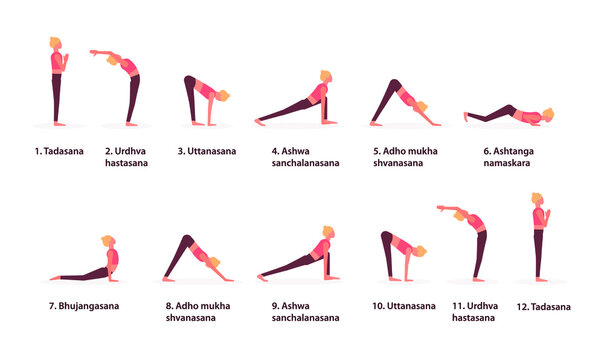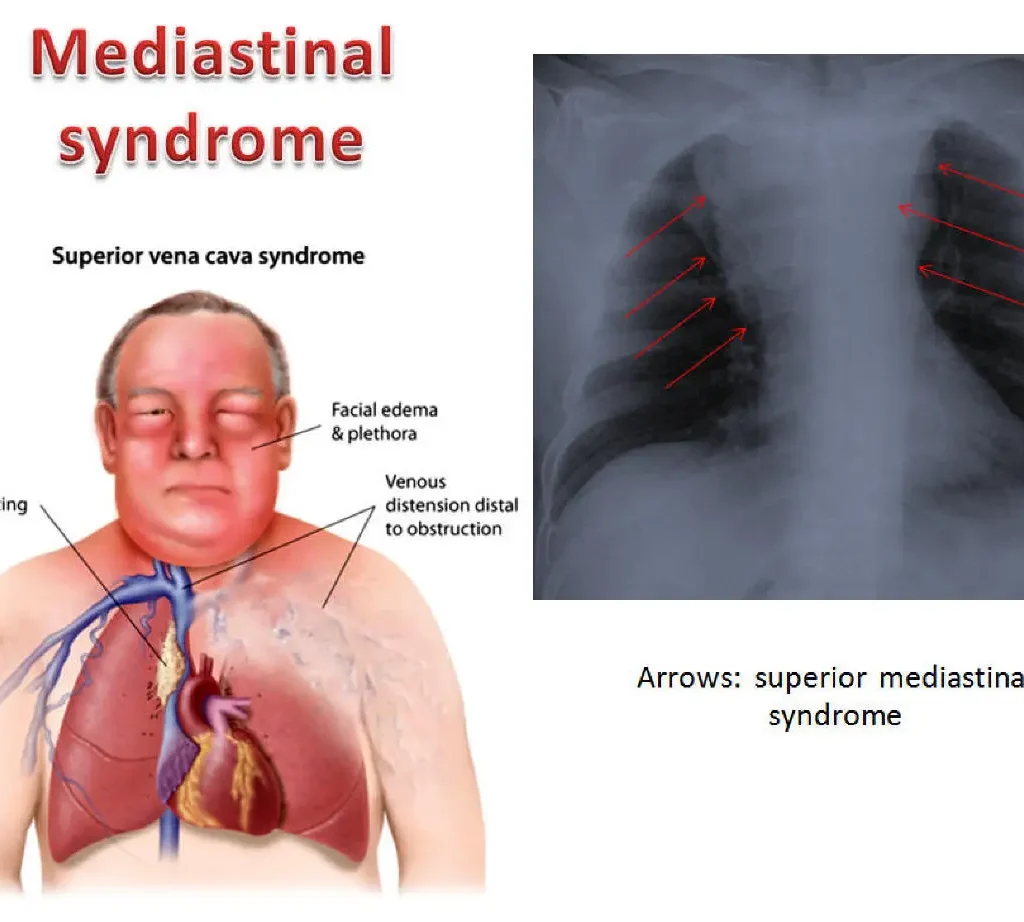12 Asanas in Surya Namaskar: Modern aspect, anatomy
Surya Namaskar Asanas Surya Namaskar, or Sun Salutation, is a sequence of 12 asanas (poses) that integrate physical movement with controlled breathing. Below is a detailed description of each asana with its associated muscles, nerves, blood supply, and movements. 1. Pranamasana (Prayer Pose) Movement:Standing posture with palms together in Anjali Mudra. Primary Muscles:Rectus abdominisQuadriceps femorisErector spinae Nerves:Lumbar plexus, femoral nerve. Blood Supply:Descending aorta branches, femoral arteries. Involved Movements:Minimal movement; focus on balance and alignment.Contraction of abdominal muscles for upright posture. 2. Hasta Uttanasana (Raised Arms Pose) Movement:Arms stretched overhead, slight backward bend. Primary Muscles:Deltoids TrapeziusLatissimus dorsiErector spinae Nerves:Thoracodorsal nerve, spinal accessory nerve. Blood Supply:Subclavian and axillary arteries. Involved Movements:Extension of the thoracic spine.Flexion at the shoulder joint. 3. Uttanasana (Standing Forward Bend) Movement:Forward fold at the hips, touching the ground. Primary Muscles:Hamstrings (biceps femoris, semitendinosus, semimembranosus)GastrocnemiusErector spinae Nerves:Sciatic nerve, tibial nerve. Blood Supply:Popliteal artery, posterior tibial artery. Involved Movements:Flexion at the hip joint.Extension at the knee joint. 4. Ashwa Sanchalanasana (Equestrian Pose) Movement:One leg extended back, other knee bent. Primary Muscles:Hip flexors (iliopsoas)QuadricepsGluteus maximusSoleus Nerves:Femoral nerve, sciatic nerve. Blood Supply:Femoral artery, popliteal artery. Involved Movements:Extension of the hip and knee.Stabilization of the pelvic region. 5. Dandasana (Plank Pose) Movement:Body straight in a plank-like posture. Primary Muscles:Core muscles (rectus abdominis, transverse abdominis)Pectoralis majorDeltoids Nerves:Thoracoabdominal nerves, brachial plexus. Blood Supply:Axillary and subclavian arteries. Involved Movements:Isometric contraction of core.Stabilization of shoulder girdle. 6. Ashtanga Namaskara (Eight-Limbed Pose) Movement:Lowering the body, touching chest, knees, and chin to the floor. Primary Muscles:Pectoralis majorTriceps brachiiRectus abdominis Nerves:Median and ulnar nerves. Blood Supply:Subclavian and intercostal arteries. Involved Movements:Flexion at the elbow joint.Activation of abdominal muscles. 7. Bhujangasana (Cobra Pose) Movement:Upper body lifted, supported by palms. Primary Muscles:Erector spinaeSerratus anteriorDeltoids Nerves:Dorsal rami of spinal nerves. Blood Supply:Intercostal arteries, lumbar arteries. Involved Movements:Extension of the thoracic spine. Stabilization of shoulders. 8. Adho Mukha Svanasana (Downward-Facing Dog Pose) Movement: Body forms an inverted “V” shape. Primary Muscles:HamstringsTriceps surae (gastrocnemius and soleus)Erector spinae Nerves: Sciatic nerve, tibial nerve. Blood Supply: Popliteal artery, posterior tibial artery. Involved Movements:Extension at the hips. Stabilization of the shoulder girdle. 9. Ashwa Sanchalanasana (Equestrian Pose) (Repeat of step 4) 10. Uttanasana (Standing Forward Bend) (Repeat of step 3) 11. Hasta Uttanasana (Raised Arms Pose) (Repeat of step 2) 12. Tadasana (Mountain Pose) Movement:Standing upright with arms at the sides. Primary Muscles:Erector spinaeQuadricepsSoleus Nerves:Femoral nerve, spinal nerves. Blood Supply:Abdominal aorta, femoral artery. Involved Movements:Balance and alignment.Activation of core stabilizers. Physiological Benefits of Surya Namaskar • Muscles: Strengthens and tones major muscle groups, enhancing flexibility and endurance.• Nervous System: Stimulates the autonomic nervous system, particularly the parasympathetic system, inducing relaxation.• Blood Circulation: Improves venous return and oxygenation of tissues.• Joint Movements: Promotes synovial fluid secretion, enhancing joint mobility. How to do ?? References • Iyengar, B.K.S. “Light on Yoga” (1966).• Kaminoff, L. & Matthews, A. “Yoga Anatomy” (2nd Edition).• Hatha Yoga Pradipika (15th Century).• Swami Satyananda Saraswati. “Asana Pranayama Mudra Bandha” (1983). Read other articles

